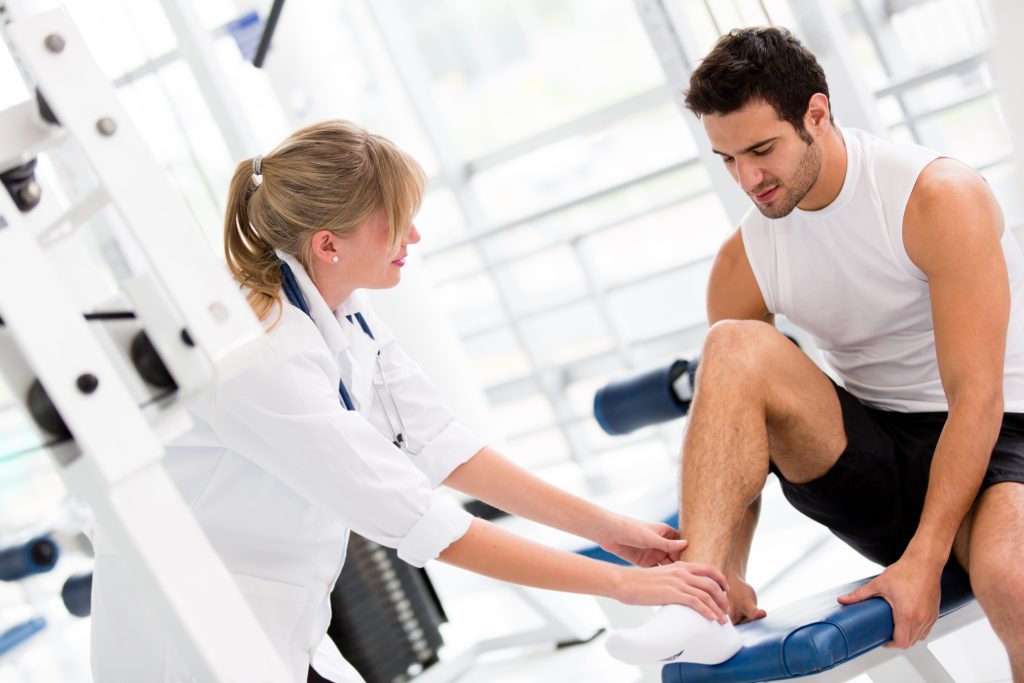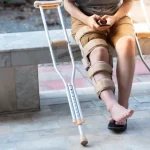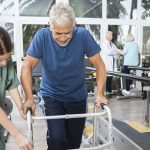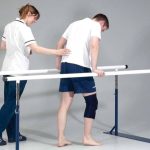Physical Rehabilitation: An Overview
Medically reviewed by Laura Campedelli, DPT
Although physical rehabilitation is similar to physical therapy, and the two terms are often used interchangeably, there are also some significant differences. Physical rehabilitation is a more inclusive term of various professions, while physical therapy falls under the scope of physical rehabilitation.
Read more about the differences in this overview on physical rehabilitation.
What Is Physical Rehabilitation?
Physical rehabilitation is the process that an injured or deconditioned person goes through to restore their physical functioning.
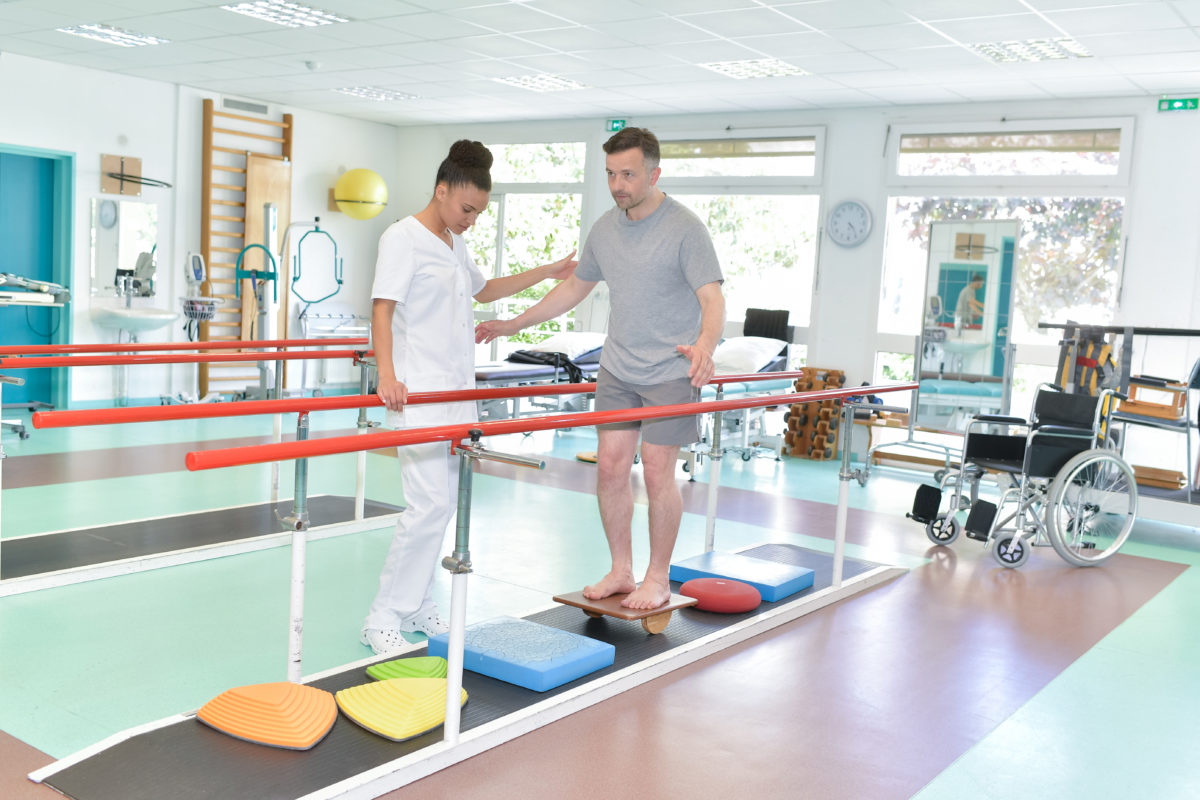
Physical rehabilitation can be a long process that starts while a person is still in the hospital after an injury and surgery, and continues through a skilled nursing facility, in-home therapy, outpatient therapy, and other settings.
During physical rehabilitation, a person may work with a variety of rehabilitation professionals including physiatrists, occupational therapists, speech and language therapists, and of course physical therapists.
For example, if you broke your wrist and it was immobilized in a cast for months, you might need to have physical rehabilitation to regain your strength and range of motion.
This rehabilitation will help you with tasks in your daily life like preparing meals, bathing yourself, working, caring for children, and more. You would likely receive rehabilitation treatment from a certified hand therapist, who could be an occupational therapist or physical therapist who has undertaken further training.
A person who had a stroke may attend physical rehabilitation to improve their balance, regain strength and motion on one side of their body, as well as relearn how to feed themselves or drive. They would likely work with a physical therapist, occupational therapist, and speech therapist to reach their goals.
There are also many other situations in which people benefit from physical rehabilitation.
Physical Rehabilitation vs. Physical Therapy
Physical rehabilitation is an umbrella term used to describe the overarching process that a person goes through to reach their optimal physical functioning.

A person going through physical rehabilitation might work with a variety of professionals who use different intervention techniques, such as medication or injections administered by a physiatrist, home exercise programs prescribed by a physical therapist, retraining in activities of daily living with an occupational therapist, and much more.
Physical Rehabilitation vs. Therapy
Physical rehabilitation describes the process that a person goes through to reach optimal physical functioning.
Physical therapy refers specifically to the physical therapy profession.
Physical therapy is a term that refers specifically to the physical therapy profession. In the United States, physical therapists (PTs) earn a doctorate of physical therapy (DPT), pass a medical board exam, and receive a license to work in their state.
PTs are an important part of the physical rehabilitation team and process. They are movement specialists and help restore a person’s physical functioning through assessment, goal setting, and a variety of interventions like strengthening, alignment, balance and vestibular training, and other therapeutic modalities.
Types of Physical Rehabilitation
Physical rehabilitation is a more general term than physical therapy. It is inclusive of a variety of professions that can all assist a person with restoring their physical functioning. Depending on your unique situation, you might work with a combination of these professionals, or just one.
Each rehabilitation profession takes a slightly different approach to physical rehabilitation. All will create a treatment plan for you that is individualized to your needs and goals.
Lower limb problems. Exercises for the knee joint. Set 4A is aimed at strengthening the muscles. Initial stage.
Physiatrist
A physiatrist—or physical medicine and rehabilitation (PM&R) doctor—is a doctor who specializes in physical medicine. Physiatrists are board-certified physicians who went to medical school but also have specialist training in physical medicine and rehabilitation.1
Physiatrists treat medical conditions that affect your musculoskeletal and nervous systems. They have an important role in coordinating and making referrals to other rehabilitation professionals, such as physical, occupational, and speech therapists.2
Physiatrists use several types of interventions, including:1
- Ultrasound-guided procedures
- Nerve stimulators or blocks
- Injections of the joints or spine
- Nerve conduction studies/EMGs
- Spasticity treatments
- Nerve and muscle biopsies
- Osteopathic treatment
- Prescriptions for orthotics or prosthetics
EXERCISES FOR REHABILITATION OF POST-STROKE PATIENTS. SET №2 IS AIMED AT IMPROVING THE MOBILITY AND STABILIZATION OF THE PELVIC COMPLEX
Physical Therapist
Physical therapists are healthcare professionals that you might be referred to during the physical rehabilitation process. Your PT will evaluate and treat you to help restore function, reduce pain, prevent lasting disability, and improve your ability to move.3 PTs work in many settings and with people of all ages.
The American Physical Therapy Association, the governing body for physical therapists in the United States, defines physical therapists as “movement experts who improve quality of life through prescribed exercise, hands-on care, and patient education.”3
Some interventions your physical therapist might use include:
- Early mobilization
- Strengthening and resistance training
- Balance and vestibular training
- Transfer training
- Exercise prescriptions
- Stretching
- Gait training
- Physical agents such as ultrasound, thermal modalities, and electrical stimulation
- Manual therapy such as myofascial release, massage, and dry needling
Multiple Sclerosis. Exercises for stretching and improving body flexibility and joint mobility, reducing tone.
Occupational Therapist
Occupational therapists (OTs) are board-certified medical professionals who work with people across the lifespan to promote engagement in meaningful occupations.4
Occupations are defined as the things that people want and need to do, such as toileting, bathing, preparing meals, religious activities, working, hobbies, sex, and caring for others.
OTs believe that by enabling a person to engage in meaningful occupations, health and wellness are promoted. The profession is unique in that it takes a holistic approach to rehabilitation.5
In addition to restoring physical functioning in the musculoskeletal system, OTs will also assess a person’s environment and psychological, spiritual, social, and cognitive factors that may contribute to their limitations.
OTs use different techniques to help a person reach their goals. Examples include:4
- Retraining in activities of daily living (e.g., bathing, dressing, toileting) and instrumental activities of daily living (e.g., laundry, preparing meals, home maintenance, caring for others)
- Environmental modifications
- Recommendations for assistive devices or adaptive technology
- Splint fabrication
- Energy conservation training
- Caregiver and patient education
- Physical agents such as ultrasound, thermal modalities, and electrical stimulation
- Exercise to promote balance, strength, range of motion, and fine motor skills
- Sensory integration
- Mindfulness techniques
- Lymphedema management
Upper limb problems. Set No.1 improvement of mobility and range of joint movement
Speech and Language Therapist
Speech and language pathologists (SLPs), also sometimes called speech therapists, are the third member of the rehabilitation therapy team. Like PTs and OTs, SLPs are board-certified medical professionals.
SLPs treat conditions related to speech, language, hearing, swallowing, and cognition to ultimately improve a person’s communication skills or safety in eating and drinking.6
In the context of physical rehabilitation, speech therapists can address the physical factors that are affecting a person’s ability to swallow or communicate.
Some interventions that speech therapists use include:
- Oral-motor exercises
- Language drills and home programs
- Conservational practice
- Modification of food or drink texture
- Exercises to improve tongue movement or chewing
- Recommendations for augmentative and alternative communication systems
APHASIA. DYSARTHRIA. SET №1:TONGUE EXERCISES
For additional information about the rehabilitation of the patients with Aphasia, Dysarthria you can watch a video demonstrating exercises and rehabilitation recommendations.
Physical Rehabilitation Settings
You may participate in physical rehabilitation in many settings. If you have surgery or a major injury, you might follow a continuum of moving from the most invasive setting (hospital or inpatient) to the least invasive (home or outpatient). Alternatively, you might have therapy in one setting.
Settings for physical rehabilitation include:
- Hospitals
- Inpatient or subacute rehabilitation facilities
- Skilled nursing facilities and rehabilitation facilities
- Home settings
- Outpatient therapy clinics
- School settings
- Work settings
EXERCISES FOR OVERWEIGHT | OBESE PEOPLE. SET NO. 1: GENERAL EXERCISES TO STRENGTHEN MUSCLES AND IMPROVE JOINT MOBILITY
The Benefits of Physical Rehabilitation
Physical rehabilitation can get you back to your prior level of function or maximum potential after a major injury, surgery, fall, disease, or another event that led to deconditioning.
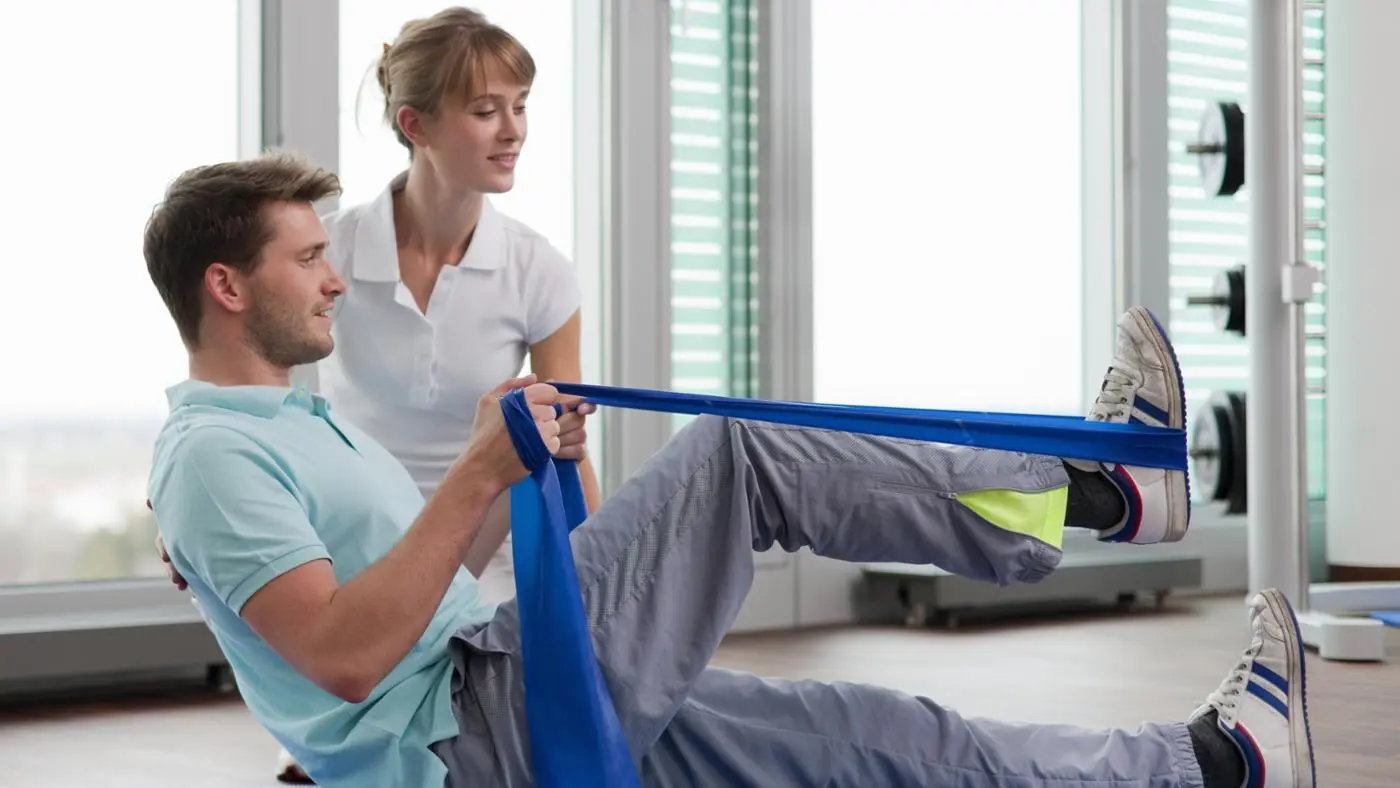
Not only will you increase your strength, but you may reduce pain and increase your activity tolerance, endurance, and balance. Physical rehabilitation can also increase your safety at home and prevent falls and future readmission to the hospital.
The physical benefits of rehabilitation will carry over to your engagement in daily life. For example, you might be able to transition to walking without assistive devices after using a wheelchair, return to work, independently bathe and dress, or get back into a meaningful hobby you had to discontinue because of your condition.
A study, jointly commissioned by the American Physical Therapy Association and the American Occupational Therapy Association, found “significant rehabilitative value” across 1.4 million Medicare cases.7
Specifically, researchers found that rehabilitation with PTs and OTs led to increases in patient function and reductions in hospital readmission in post-acute care settings. Additionally, patients who received more time in therapy had improved outcomes over those who had less therapy.7
Physiatry, physical therapy, occupational therapy, and speech therapy are all evidence-based professions with ongoing research on the best interventions for specific conditions.
By Sarah Bence, OTR/L
Bence is an occupational therapist with a range of work experience in mental healthcare settings. She is living with celiac disease and endometriosis.

Demo version of GRS workouts for rehabilitation on YouTube
Summary
Physical rehabilitation is not a simple upward trajectory. You may have setbacks, and your journey to recovery might be more of a “roller coaster” than a straight path.
It’s also important to note that complete independence is not everyone’s goal. Your rehabilitation professionals should take your unique needs, culture, values, and personal goals into consideration when planning your treatment.
For example, you might want to transition from using a wheelchair to using a walker, but you might not. Instead, you might want to improve your wheelchair navigation skills or learn a sport using your wheelchair.
Both situations are considered physical rehabilitation, and your therapists will incorporate your preferences into your treatment plan.
FREQUENTLY ASKED QUESTIONS
1.What does a doctor of physical medicine and physical rehabilitation (PM&R) do?
A PM&R doctor specializes in physical medicine and rehabilitation. They are able to administer specialty procedures, such as muscle biopsies, spasticity treatments, nerve conduction studies, and ultrasound-guided procedures.1 PM&R doctors are also experts in the physical rehabilitation process and can refer patients to other therapists on the rehab team, including PTs, OTs, and SLPs.
2.What does the term “physical medicine and rehabilitation” mean?
“Physical medicine and rehabilitation” refers to the area of medicine that physiatrists specialize in. These doctors aim to restore quality of life and functional ability due to physical impairments that affect the musculoskeletal or nervous system. This can include disease, surgery, or injury that affects your bones, brain, spinal cord, nerves, joints, muscles, tendons, and ligaments.
3.What is the primary goal of physical rehabilitation?
Physical rehabilitation is about restoring functioning and quality of life, but the specifics will be different for everyone. Goal setting is one of the most important parts of the physical rehabilitation process and is what guides the interventions that your therapist chooses, as well as how you measure your progress over the clinical course.
During your first visit, your physical, occupational, and/or speech therapist will complete an evaluation which should include setting goals for therapy. These will include time-bound, measurable, as well as short-term and long-term goals. Your rehabilitation goals should be individualized to your own preferences and goals for your recovery and life.
Sources
- American Academy of Physical Medicine and Rehabilitation. What is a physiatrist?
- Hitzig SL, Conn LG, Guilcher SJT, Cimino SR, Robinson LR. Understanding the role of the physiatrist and how to improve the continuum of care for trauma patients: a qualitative study. Disabil Rehabil. 2020 Feb 4. doi:10.1080/09638288.2020.1719215
- American Physical Therapy Association. Becoming a PT.
- American Occupational Therapy Association. Occupational therapy: improving function while controlling costs.
- American Occupational Therapy Association. What is occupational therapy?
- American Speech-Language-Hearing Association. Speech-language pathologists.
- American Occupational Therapy Association. Research: occupational therapy and physical therapy provide significant rehabilitative value in post-acute care.

